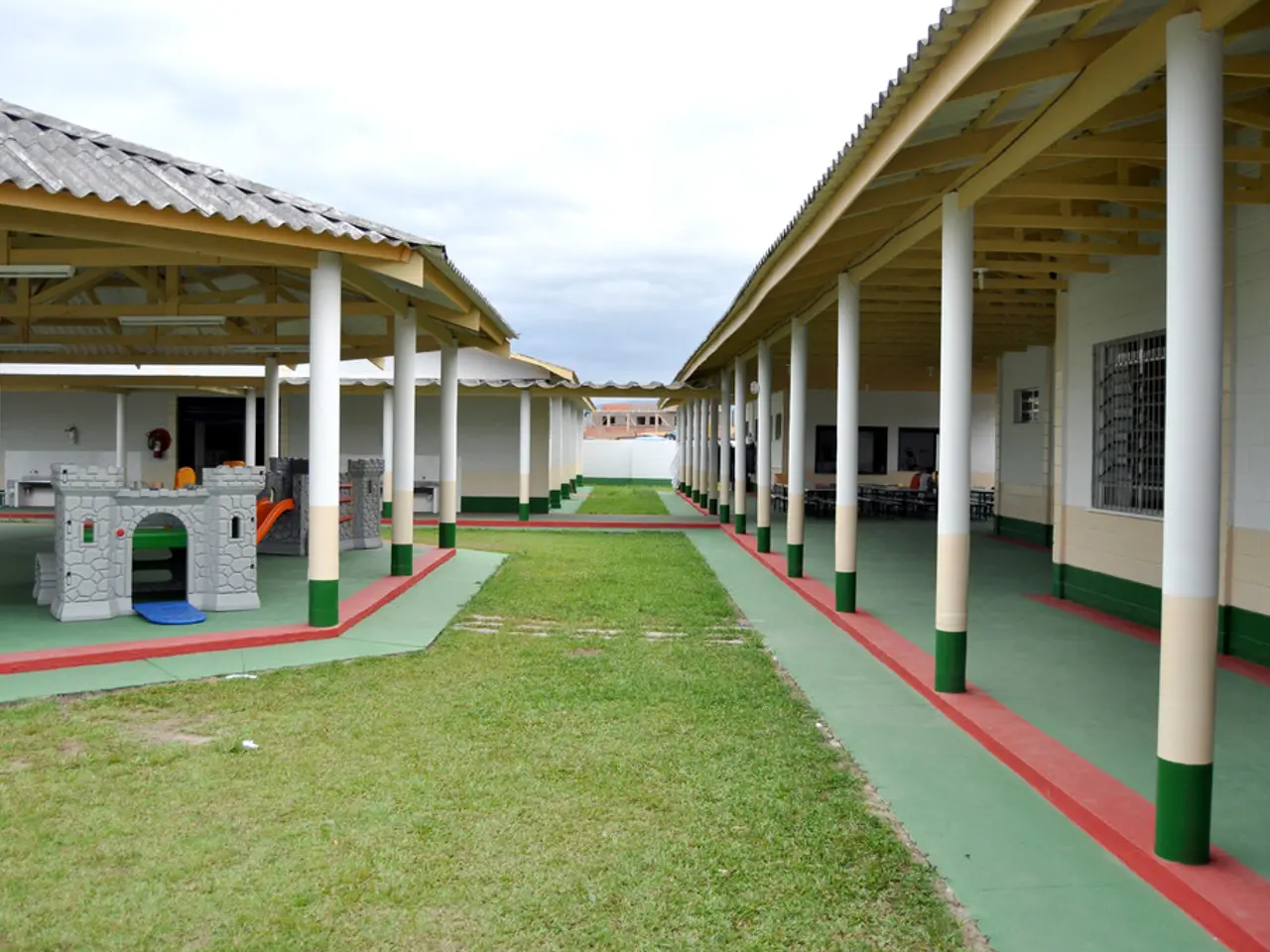Preparing for an apocalypse is often misconstrued by doomsday preppers. Here's the correct strategy to ensure survival.
In the face of increasing global uncertainties, experts across various fields are urging individuals to be prepared for just-in-case scenarios. From the Red Cross to the British government, the recommendation is clear: keep an emergency kit ready at all times. But for those seeking more extensive protection, the construction of residential underground bunkers is gaining popularity.
For a bunker to withstand nuclear fallout or doomsday scenarios, it requires a specific design and construction materials. The recommended design includes thick, heavy reinforced concrete walls with a density greater than 3,200 kg/m³, ideally between 2 to 3 meters thick. The bunker should also be placed at least 30 feet underground to provide strong protection from blast effects and radiation penetration.
Construction involves creating a gravel base layer with proper drainage, followed by the formation of concrete slabs and walls using wooden forms and strong reinforcement such as steel helix bars or rebar. Waterproofing and moisture control are essential, with spray foam insulation applied in multiple inches thickness to vertical and horizontal surfaces to ensure concrete adherence and reduce moisture buildup.
Key safety and functional features for the bunker include reinforced blast doors for secure and airtight entry, air filtration systems capable of filtering radioactive particles and chemical contaminants, independent power systems, adequate food and water storage, interior structural reinforcements, and design considerations for radiation shielding, blast resistance, moisture control, and comfort.
Climate scientists warn that we're behind targets to prevent catastrophic climate change, highlighting the importance of being prepared for various emergencies. In such situations, high-efficiency particulate air (HEPA) filters or overpressure systems can help keep out contaminants in shelters.
In terms of food stockpiling, recommendations vary. In Germany, the recommended food stockpile includes 3kg of grain products, bread, and potatoes; 4kg of vegetables; 2.5kg of fruit; and 1.2kg of meat, fish, and eggs. German authorities recommend stockpiling 10 days' worth of food per person, based on 2,200 calories per day, with detailed nutritional breakdowns.
An emergency kit should contain essential items such as bottled water, non-perishable meals, warm and waterproof clothing, a first aid kit, a battery or wind-up torch, a battery or wind-up radio, solar-powered batteries, a multitool, hand sanitizer, wet wipes, baby supplies if required, local maps, and lists of vital phone numbers and addresses.
Artificial intelligence continues its advance despite warnings from multiple experts. Meanwhile, an increasing number of people are investing in underground shelters to sustain life in the event of a doomsday scenario. Notable figures like Mark Zuckerberg and Bill Gates are reportedly building vast shelters with their own food and energy supplies.
Switzerland and Finland, in particular, are leading the way in underground shelter preparations. Switzerland announced plans to revamp its vast network of 360,000 underground shelters, enough to house more than 9 million people. Helsinki, Finland, is often hailed as the gold standard of underground civil defence planning, with spaces integrated into modern life.
As we move closer to the Doomsday Clock, which was moved to 89 seconds to midnight in February 2025, marking the closest it has ever been to 'boom-time', the need for emergency preparedness becomes more urgent. Whether it's a small emergency kit or a full-scale underground bunker, being prepared for the unpredictable is key to ensuring survival in challenging times.
- Experts across multiple fields are urging individuals to be prepared for just-in-case scenarios, such as nuclear fallout or doomsday scenarios.
- For a bunker to withstand such extreme conditions, it requires specific design and construction materials.
- The bunker should have thick, heavy reinforced concrete walls with a density greater than 3,200 kg/m³, ideally between 2 to 3 meters thick.
- Construction involves creating a gravel base layer with proper drainage, followed by the formation of concrete slabs and walls.
- Key safety and functional features for the bunker include reinforced blast doors, air filtration systems, independent power systems, and radiation shielding.
- Climate scientists warn that we're behind targets in preventing catastrophic climate change, emphasizing the importance of being prepared for various emergencies.
- High-efficiency particulate air (HEPA) filters or overpressure systems can help keep out contaminants in shelters during climate-related emergencies.
- For food stockpiling, German authorities recommend 10 days' worth of food per person, based on 2,200 calories per day.
- Artificial intelligence advancements are ongoing, leading more people to invest in underground shelters for self-sustenance during doomsday scenarios.
- Switzerland and Finland are leading the way in underground shelter preparations, with Switzerland revamping its vast network of 360,000 underground shelters and Helsinki hailed as the gold standard of underground civil defence planning.
- As we inch closer to the Doomsday Clock, with it being moved to 89 seconds to midnight in February 2025, the need for emergency preparedness becomes more urgent.
- Whether it's a small emergency kit or a full-scale underground bunker, being prepared for the unpredictable ensures survival during challenging times, as illustrated by the popularity of environmental-science research, technology, and lifestyle changes in the realm of food-and-drink, home-and-garden, education-and-self-development, entertainment, and general-news discussions, all while embracing the potential benefits of artificial intelligence in a myriad of ways.




